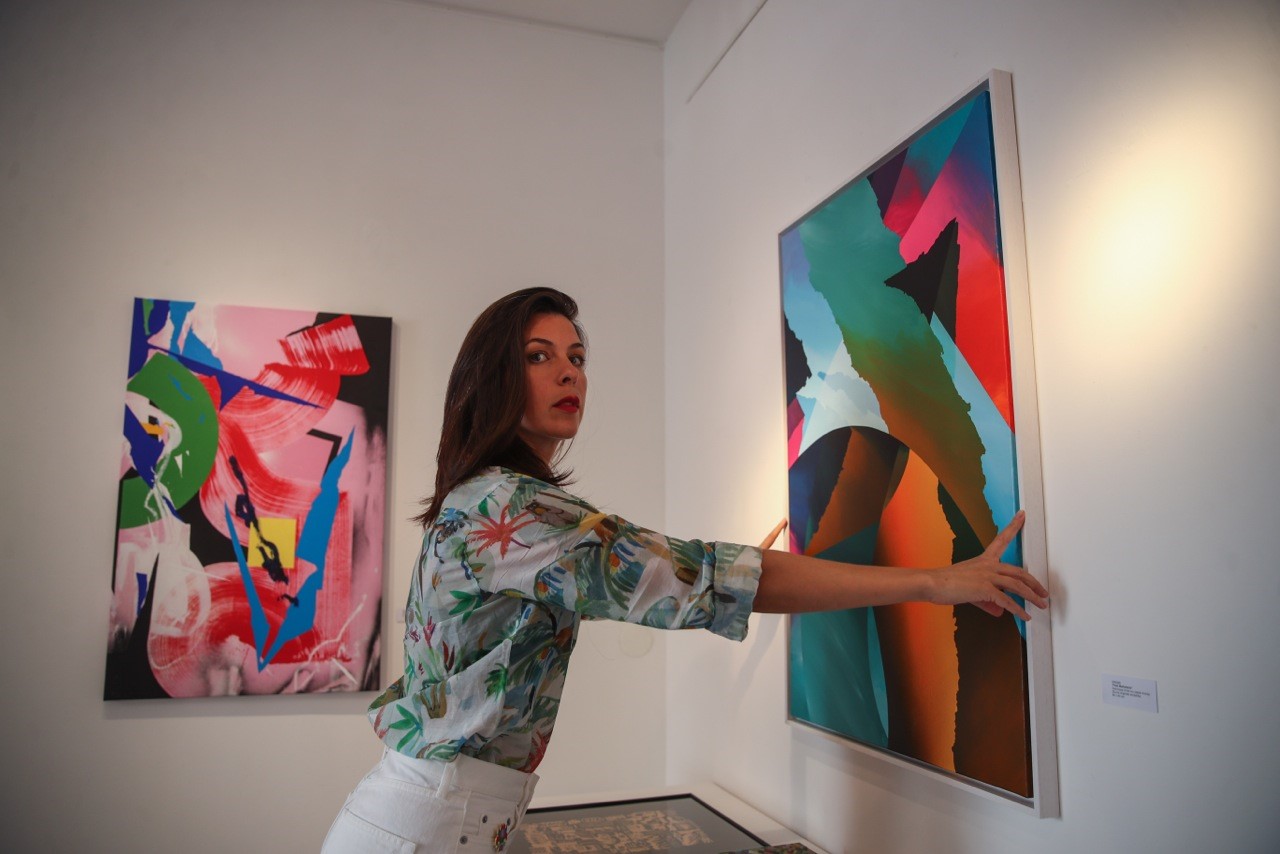- About MTN
Would you like to stay up to date on the latest MTN world news? Products, graffiti, murals, festivals, art and much more.
Return "We even serve police" An interview with Anna Dimitrova, curator of the Montana Gallery Barcelona
One of the most media-friendly members of the Montana Colors family, our subject is no stranger to interest from journalists. Amongst her exceptional qualities are her public grace and tact. She has featured in articles and been interviewed by elDiario.es, El País, Yorokobu and Plataforma de arte contemporáneo, amongst others. She is Anna Dimitrova, the curator of the our exhibition space, situated right next door to the Montana Shop Barcelona - Born: The Montana Gallery Barcelona.
How long have you been working at Montana Colors?
Since 2010, it seems like a long time.
Has your work changed a lot since then?
Lots, every year it changes. The space evolves, the artists too, and especially the market. In the last ten years, I’ve opened galleries in Paris and Ibiza - both called Adda Gallery - giving me the option of showing artists in different spaces and cities. The combination of the three locations is interesting, which also allows for certain exhibitions to “tour”.
What criteria do you use when selecting the artists to exhibit?
They must have talent and be tremendously hard-working. Their work must surprise the eye with a different style and a personality of its own. And they must have a background in urban art, since that's what we do.

Have you noticed that much has changed at the company?
It has grown, it has become professional, and all the necessary processes of an international company have been created. But it hasn’t lost its family character, which for me, and I believe for all of the MTN team, is very important.
Which departments do you deal with most often?
Direction and marketing.
As the gallery is next to the shop, do you find much crossover between customers and visitors to the gallery? Do they differ a lot from each other?
Yes, of course, the public mix and give us feedback. And yes, they differ a lot. The customers of the store are artists, we could say that they are they "supply" the gallery. What I like is the variety of public that passes through the shop-gallery space. We are an essential meeting point for anyone who comes to Barcelona with an interest in graffiti and urban art.
Tell us about an exhibition that was especially memorable.
I have three.
1. Popay’s show in 2010, which built the bridge for me to go to Paris.
2. The "Tribute to Moebius" in 2012, where we brought together 20 artists who created works inspired by Moebius's work right after he left us, with the help of Albert Pons.
3. And the “101” exhibition, held this year, which was my 101st exhibition. I invited 101 artists who I’d worked over the last ten years. For me, it was the most emotional because so many people came to the opening. We were all there! It was also the last opening under normal conditions that we were able to organize before everything changed this year.

Is there a particular work of art hanging in the gallery that surprised you a lot?
One by Ana Langeheldt that depicted a strawberry girl. I ended up buying it, and I have gazed at it every day with the same intensity ever since.
What’s the strangest thing that has happened in an exhibition?
The work didn’t arrive on time for Smithe’s exhibition, the artist couldn’t travel and I missed the plane so we had to reschedule everything.
What are the new, socially distanced openings like?
There are no openings.
But hey, people come by in smaller numbers, and this allows us to provide a more personal touch, spending more time with each visitor and explaining the exhibition better and talking about artist in more detail.
So it's not too bad.
At the previous openings, which Montana Colors employees would drop by?
Jordi Rubio, Albert Guarch, Olga Fuertes, Musa, Marc Dalmases, Dario Chemello, Alberto Feás, Oscar Ferrer, and lots more.

Many people believe that graffiti and urban art are two opposed things. Is that right? What is the real difference?
Yes, they are different. Graffiti develops purely on the street, it’s illegal, it’s vandalism, based on letters. Urban art leaves writing to one side in order to become figurative or abstract. It is done with time, with permission. They are like two brothers of the same family. One is rebellious and the other diligent.
In all the time you've been a curator, has there been any brush with the law? Through an artist who has exhibited, or because of an event?
Yes, the police have visited us several times because there were too many people at the openings, but the matter has always been resolved without much fuss.
The funny thing is that we have some clients who are police and shop at the gallery.
A word to sum up the future of urban art?
Contemporary art.
Who is your favorite Montana Colors worker?
Oscar Ferrer.
ShareDecember 16, 2020
